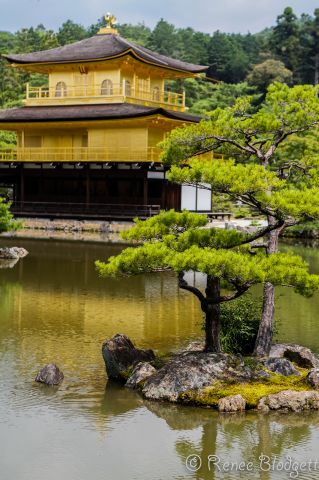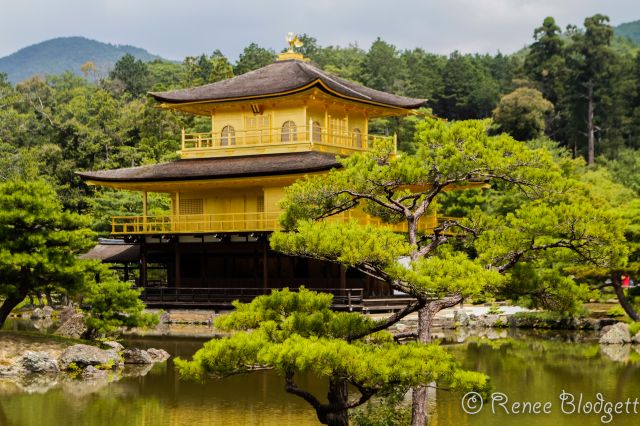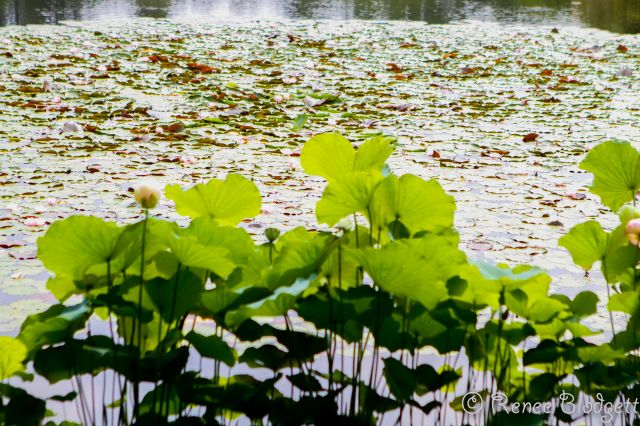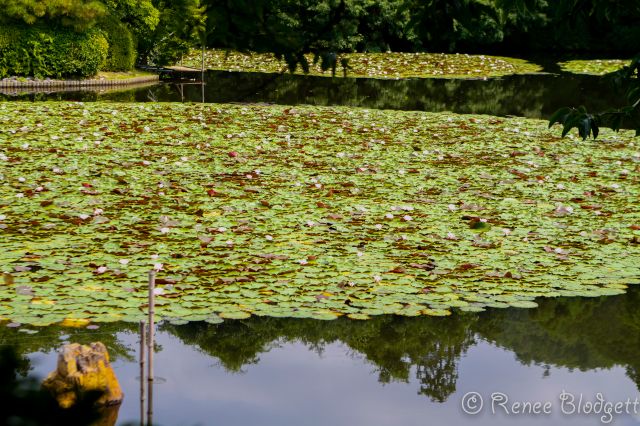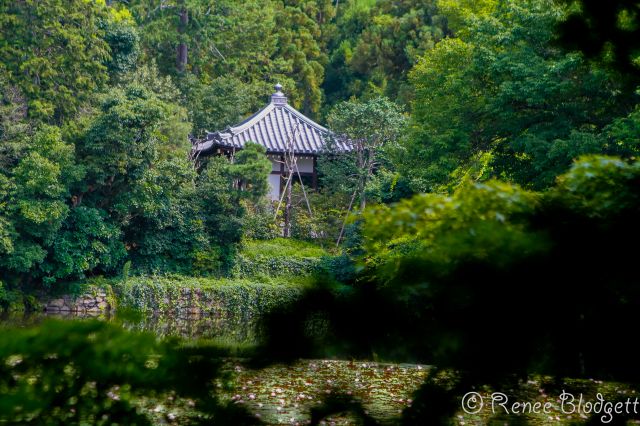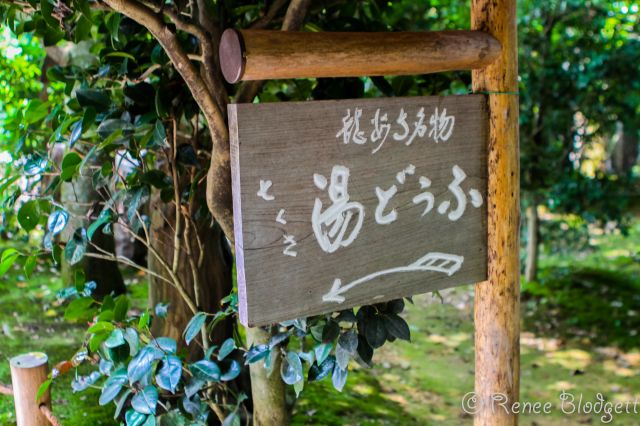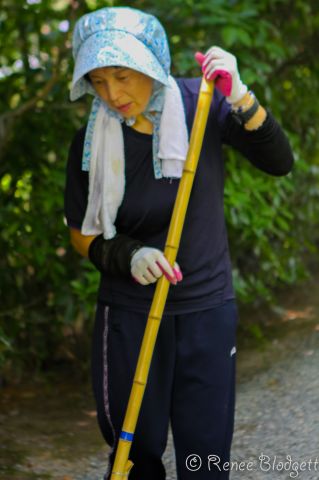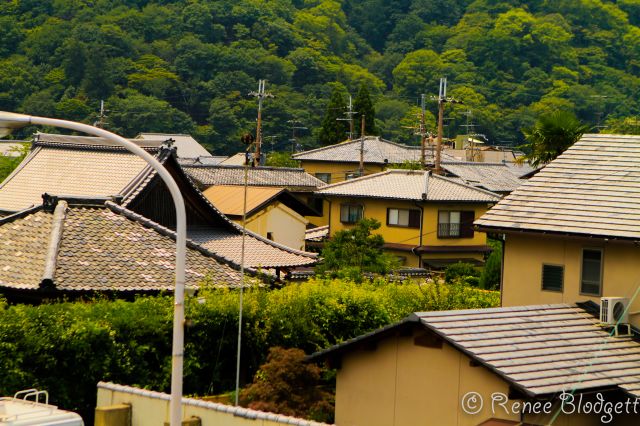Kyoto’s Rokuon-ji Temple & Golden Pavilion (Kinkaku) are both nestled in the outskirts of scenic Kyoto in central Japan. When you’re first greeted with the magestic temple, it takes a few minutes to adjust to its beauty.
This area has quite a past, for a temple of this magnitude could lay no claims. It’s not the pavilion and temple are that large in size, but their presence overwhelms at first. The area was originally the site of the Kitayama-dai Villa and today is a shariden, a Buddhist hall containing relics of Buddha.
The garden and buildings in and around the Golden Pavilion were said to represent the Pure Land of Buddha in this world. It used to welcome the Emperor Gokomatsu (Father of Zen teacher, Ikkyu) and other members of nobility. This was all during the Muromachi period, a time which flourished with trade. Later, it was converted to a temple by a priest who became the first abbot. Talk about fascinating, but then it goes on…..The temple’s name Rokuon-ji, was derived from the name Yoshimitsu was given for the next world – Rokuon-in-den. It wasn’t until 1994 however that the Rokuon-ji Temple was registered as a World Cultural Heritage Site.
Gold foil on lacquer covers the upper two levels of Kinkaku and a shining phoenix stands on top of the shingled roof. The first level is built in the shinden style of the 11th century imperial aristocracy; the second level is in buke style of the warrior aristocracy and the top level is in the Chinese zenshu-butsuden style. It represents the Muromachi-period architecture and is….just stunning.
The pond around the Golden Pavilion exudes magic. Rocks donated by various provincial lords of the period are placed throughout the garden and strolling through it brings a sense of calm and serenity — at least it did for me. It is also typical of the Muromachi period and it is listed as a National Special Historic Site and Special Place of Scenic Beauty. Ponds in and around the pavilion include the pond of An-min-taku and the pond of Kyoko-chi.
There’s a detached tea house which was built during the Edo period and Fudo-do is nearby, a stone statue of the Buddhist deity Fudo-myo-o. This statue is thought to have been made in the 9th century by Kobo-daishi, founder of the Shingon sect of Buddhism. Open door rituals are held on Setsubun (in early February) and on August 16 each year.
Below is a view of some of the residential houses in the area as I was exiting the area.
For more posts on Japan, see our Japan section and on Tokyo, visit our Tokyo Japan / top things to do in Tokyo section.
Details:
The Golden Pavilion / Rokuon-Ji Temple
603-8361 Kinkakuji-cho
Kata-ku, Kyoto Japan
Tele: 075.461.0013
If driving and not taking the bus or train, then it is about 13 km from the Meishin Expressway, Kyoto Higashi or Minami Interchange.
Note: Princess Cruises sponsored my trip to Japan, however all side trips and attractions and my opinions of them are entirely my own and are not shaped by taking the cruise with them.

Renee Blodgett is the founder of We Blog the World. The site combines the magic of an online culture and travel magazine with a global blog network and has contributors from every continent in the world. Having lived in 10 countries and explored nearly 80, she is an avid traveler, and a lover, observer and participant in cultural diversity.
She is also the CEO and founder of Magic Sauce Media, a new media services consultancy focused on viral marketing, social media, branding, events and PR. For over 20 years, she has helped companies from 12 countries get traction in the market. Known for her global and organic approach to product and corporate launches, Renee practices what she pitches and as an active user of social media, she helps clients navigate digital waters from around the world. Renee has been blogging for over 16 years and regularly writes on her personal blog Down the Avenue, Huffington Post, BlogHer, We Blog the World and other sites. She was ranked #12 Social Media Influencer by Forbes Magazine and is listed as a new media influencer and game changer on various sites and books on the new media revolution. In 2013, she was listed as the 6th most influential woman in social media by Forbes Magazine on a Top 20 List.
Her passion for art, storytelling and photography led to the launch of Magic Sauce Photography, which is a visual extension of her writing, the result of which has led to producing six photo books: Galapagos Islands, London, South Africa, Rome, Urbanization and Ecuador.
Renee is also the co-founder of Traveling Geeks, an initiative that brings entrepreneurs, thought leaders, bloggers, creators, curators and influencers to other countries to share and learn from peers, governments, corporations, and the general public in order to educate, share, evaluate, and promote innovative technologies.


